The Four fortified wines from Portugal

Port is Portugal’s most acclaimed fortified wine and, arguably, one of the most popular fortified wines all over the world. Many enjoy the sweetness and complexity of this beverage often served as an appetizer or, even more commonly, as a dessert wine. But do they know how Port came to be or how to discern from the different types of Port according to personal taste and budget?
The world of Portuguese fortified wines goes beyond Port and this is what we are aiming to explore here today. We look into the repertoire of Portuguese fortified wines which, besides Port, also includes Carcavelos, Madeira, and Moscatel from Douro and Setúbal.
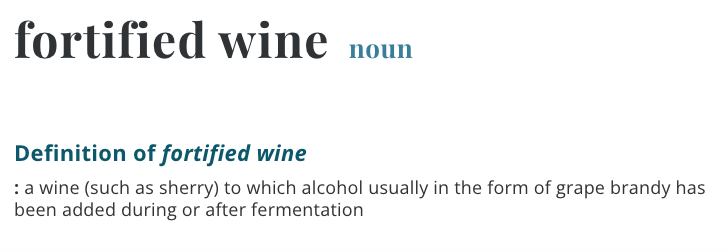
What is a fortified wine?
We want you to start exploring the tempting world of Portuguese fortified wines by first explaining what a fortified wine is.
Fortified wines are those whose fermentation process has been interrupted by the addition of extra alcohol. Thus, to the base wine, producers add a distilled spirit like grape brandy, so the wine ends up with a significantly higher alcoholic content. When the brandy is added, the fermentation is interrupted, meaning that the sugars that would normally be transformed into alcohol over time during this process, end up remaining as sugar, as this is what makes fortified wines sweeter than regular table wines.
Fortified wines are not the type of beverage you’d order to accompany a meal. Instead, they are something you’d take your time to sip and savor, either as aperitif or dessert. These are strong and rather sweet wines and, in spite of their smoothness on the palate, can be quite alcoholic too. Besides Portuguese fortified wines, some of the most popular wines around the world that fit into this category include Commandaria from Greece, Jerez (also known in English as sherry) from Southern Spain, Marsala from Italy or vermouth from several origins, which consists of fortified wine aromatized with botanicals like herbs and spices.

How did fortified wines come to be?
The history of fortified wines is quite curious. As many foods and beverages throughout history, fortified wines weren’t a direct invention per se, but were an innovation that came to be out of sheer necessity.
Traders started adding extra alcohol to still wines to preserve them during long boat trips. As early as the 16th century, several southern European countries, including Portugal, were exporting their wines to Europe and beyond. The trips that used to happen with sailing boats were long and over choppy waters, and this used to have a major impact on the quality of the wines, which often reached their destination in less than their prime state. Not only refrigeration wasn’t an option back then, wines were also transported in barrels instead of after being bottled. As barrels are not as airtight as bottles, the wine would tend to oxidize and become vinegary. The addition of spirits was a way to get around this situation, as a higher alcohol content would result in less spoilage.
When this method of fortifying wines came about, not everyone in the wine industry was happy, as some would suspiciously consider this a way to adulterate wines of poor quality. But the truth is that, over time, this resulted in less waste, happy customers, and the birth of a type of wine that is nowadays very much appreciated all over the world.
In Portugal there are four different types of fortified wine: Carcavelos, Madeira, Moscatel and Port.
As these four types of Portuguese wine share the label of “fortified wine”, they certainly have some things in common. But they also have their own particularities which set them apart and make them worth exploring individually. For instance, while Madeira wines age in warm attics, Ports do so in cooler caves. But there are many other things that distinguish them, from the regions where they are produced, to the grape varieties used to create these wines. let’s go deeper into the world of Portugal’s delectable fortified wines.
Carcavelos wine
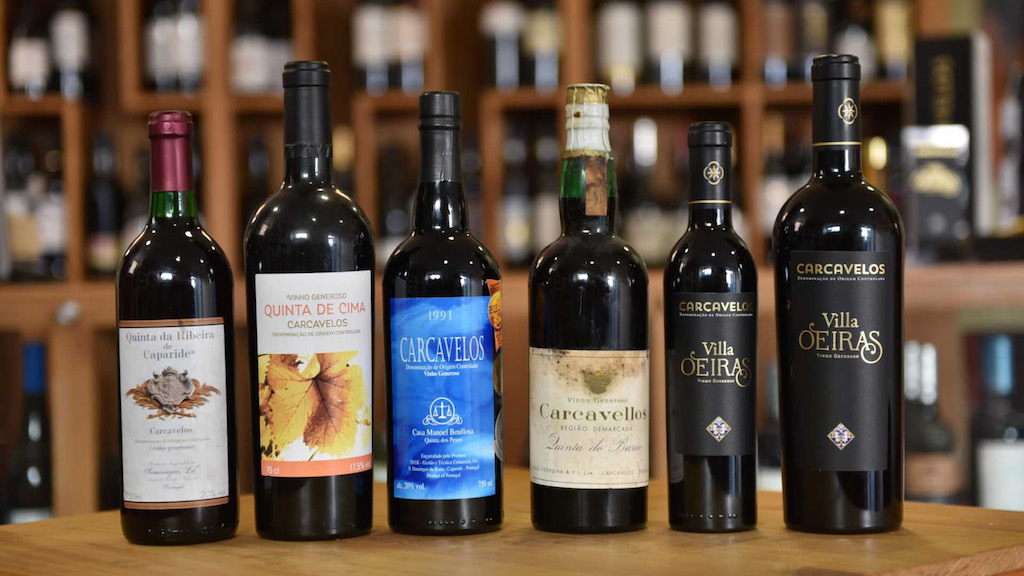
We start by introducing you to Portugal’s least known fortified wine, coming from Carcavelos. This town near Lisbon is Portugal’s smallest demarcated region and one of the smallest in the world! Proof that quality
reigns over quantity, Carcavelos wine has been produced here since at least the 15th century and, because it shares such a small market fraction, many fear it will soon stop being produced and will end up disappearing.
Vinho de Carcavelos is produced in the sub-region of Carcavelos in Oeiras, which is a part of the wider Lisbon wine region. Mostly because of the pressures of urban development, the territories once covered in vineyards got smaller and smaller. Thankfully, the municipality of Oeiras has in recent years started a program to protect and promote Carcavelos wine, which is a part of the wine history of Portugal that would be a shame to erase.
Carcavelos wine is produced out of several types of grape, most notably Arinto, Galego Dourado and Ratinho. This wine, often recognized by its honey hue, is usually fortified with brandy from nearby Lourinhã and is best enjoyed at a temperature between 10ºC (50ºF) and 15ºC (59ºF).
If you are a wine lover visiting Lisbon, we highly recommend exploring the small but fascinating world of Carcavelos wine. After all, Oeiras is the very next town after the Lisbon district of Belém, on the way to Cascais. Here you can visit Villa Oeiras to explore the vineyards, the cellar where the wines are aged, and also enjoy a tasting of the different varieties of Carcavelos wine, which is usually aged for at least 10 years in oak barrels of Portuguese or French origin.
🍇 The main types of grape used for wine making in the Carcavelos region include Arinto, Boal, Galego Dourado, Negra Mole, Ratinho, Trincadeira and Torneiro.
🍷 Taste Carcavelos wine near Lisbon at Castiço Wine Bar (Praça Dr. Manuel Rebello de Andrade 3, 2775-596 Carcavelos)
📦 Buy Carcavelos wine to take back home at Loja da Confraria dos Enófilos do Vinho de Carcavelos (Rua Cândido dos Reis 49, 2780-295 Oeiras)
📍 Visit the vineyards and cellars where Carcavelos wine is produced at Villa Oeiras (Adega Casal da Manteiga Rua da Mina, Estação Agronómica Nacional, Oeiras)
Madeira wine
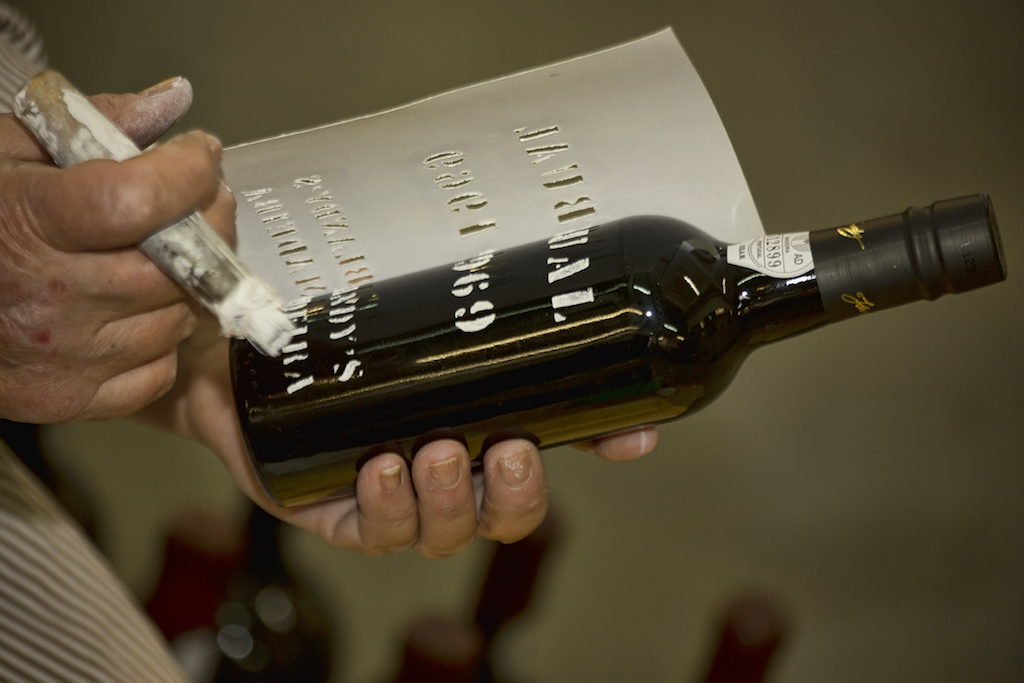
Madeira rivals Port as Portugal’s most beloved and well-known fortified wine. Hailing from the Atlantic archipelago of Madeira, Madeira wine started being produced since the Portuguese reached this island in the 1400s.
Madeira wines were regular table wines, to begin with. It was only shortly after they started being exported that the need to fortify them arised. The addition of alcohol would make the wine more resistant to long trips, which back then took place on boats over turbulent waters.
Back in the 17th century and up until as recently as the 20th century, some Madeira wines were shipped round-trip on a sea voyage. This came about during the Portuguese sailing explorations and trading trips that would carry some of these wines for sale. The wines that weren’t sold would end up returning back home, only to be sold under the name vinho da roda. Vinho da roda was believed to gain unique characteristics during these trips, as the motion of the waves and the temperature differences would impact the aging process of the wine and aid in the development of peculiar flavors and scents. These wines were sold at high prices which inspired some producers to send their barrels out to sea, to mimic these circumstances. With the later invention of the estufagem method, which we’ll explain next, the romantic but expensive and impractical vinho da roda as known back then didn’t quite stick.
Winemakers exclusively use grape distillate to fortify the wine which, with the exception of some varieties that have a higher percentage, usually contain up to 17% alcohol. There are four different styles of Madeira wine: dry, medium-dry, medium-sweet, and sweet. The sweeter wines have their fermentation interrupted by the addition of alcohol rather early during the wine fermentation process, while the drier Madeiras are fortified with the addition of alcohol after the fermentation.
Currently, after fermentation, most Madeira wine spends at least three months in the process of estufagem, that is, gently warmed up to temperatures of 45°C in heated tanks, aging during a period of four month. This is when the sugars present in the wine caramelize giving Madeira its characteristic flavor. The wine is basically oxidized through controlled heating, which contributes to the development of flavor and structure. This is a specific process used for Madeira wine, which is known as maderization. After the maderization process, the wine ends up with its characteristic amber color.
Another way of aging the wine is by means of the canteiro process, which is the original and nowadays reserved for the noblest Madeira wines. Canteiro refers to the supporting beam where the casks reserved for wine aging are placed. This distinctive process consists of the aging of the wines in seasoned oak casks for a minimum period of four years. During this time, the natural sun that heats the attic where the casks are placed helps slightly warm the wine, aiding in its partial evaporation and concentration, and thus developing the range of aromas expected from a high-quality Madeira.
The main differences between the estufagem and the canteiro methods are the human intervention vs natural phenomena. While canteiro method is indeed more classical, it can also be more hit or miss, as the temperatures can only be controlled by moving the casks between hotter attic floors or cooler lower floors. Increased market demand led to the development of the estufagem method for production of Madeira wine back in the late 1700s, which allowed winemakers to be in tighter control of their production. While some would say estufagem Madeiras don’t have the same depth of flavor and aroma as canteiro wines, the truth is that they are nonetheless very enjoyable to the palate.
When you shop for Madeira, you will come across wines of different ages, starting with those named Selected, which are wines that have aged for at least three years, and that would normally be used for cooking. The most remarkable ones are those that have matured for a longer time. For a Madeira to be considered vintage, it must age for at least 20 years in cask. If you’d like to understand how the noble varieties of Madeira are labeled, note that they may come as:
- Reserve: this is the minimum amount of aging for the noble varieties, which refers to at least five years;
- Special Reserve: ten years of aging with only natural sources of heat (that is, no estufagem method);
- Extra Reserve: in between Special Reserve and Colheita we find the Madeiras aged for 15 years, which is not as common as the latter or the next category;
- Colheita (or Harvest): wine produced with the harvest of a single special year, considered vintage because of its exceptional qualities. Colheita Madeiras have to age for a minimum period of five years prior to being bottled, but they can actually mature for longer than that.
- Vintage (or Frasqueira): refers to Madeira wines of at least twenty years of age, which should comprise of at least nineteen years in cask and another year after being bottled. Inside Portugal, you will not come across a Madeira wine bottle with the label “vintage” once this designation is exclusively used for Port. Thus the naming “Frasqueira”.
The vast majority of Madeira wine is made using Tinta Negra Mole, a variety of red grape widely cultivated in Madeira islands, popular for its sweetness. As Madeiras aged using the canteiro process are more high-end, the grape varietals used for these wines tend to also be a selection of the most premium types, featuring white grapes such as Bual, Malmsey, Sercial, Terrantez and Verdelho.
Madeira is the world’s longest-lived wine and can virtually last forever. A Vintage Madeira from 1799 is still available in the market and not only can it still be drunk, it can also be saved for later if stored properly!

🍇 The most popular Madeira wines are produced with white grape varietals, being the main four ones Bual, Malmsey, Sercial and Verdelho. But, surprisingly, the vast majority of Madeira wine is made using red grape Tinta Negra – this accounts for about 85% of all Madeira wine, yet admittedly not the most acclaimed types. If you use Madeira for cooking, to make a dessert, season a roast or to make a sauce to serve with chicken, you are likely to end up using a young Madeira produced with Tinta Negra. Make sure you reserve the most aged types produced with white grapes for sipping at a leisurely pace!
🍷 Sample Madeira wines in Lisbon at Prova Enoteca (Rua Duarte Pacheco Pereira 9E, 1400-139 Lisbon)
📦 Buy Madeira by the bottle in Lisbon at Garrafeira Nacional (Rua de Santa Justa 18, 1100-485 Lisbon)
📍 If you’re lucky enough to travel to Madeira, you can visit several wine producers which open their doors to wine connoisseurs wishing to learn more about the winemaking process and do tastings on location. These companies include Blandy’s, Barbeito, D’Oliveiras (which gathers five different producers of Madeira wine) and H.M. Borges.
Moscatel wine
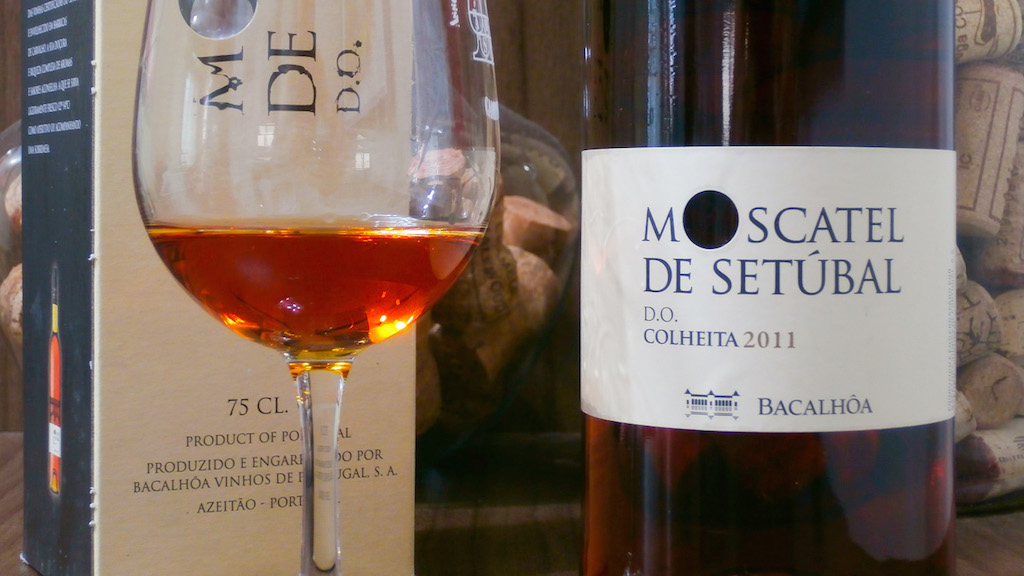
Generally speaking, moscatel is a type of wine made from muscat grapes, which is not exclusive from Portugal. In Portugal, there are two varieties of muscatel wine being produced: Moscatel de Setúbal DOC and Moscatel do Douro.
In the close to Lisbon area of Setúbal, the production of Moscatel is split into two varieties, Moscatel de Alexandria and Moscatel roxo, while up north in the Douro region, more specifically around Favaios, Moscatel Petit Grains grapes are used for this purpose.
While Favaios has a decent reputation for the production of Moscatel wine, it’s still true that the popularity of Port wine in the Douro region leaves Moscatel a little in the shade. Conversely, down south in Setúbal, Moscatel is king! The Demarcated Region of Moscatel de Setúbal started being protected and regulated back in 1907 and has been going strong ever since.
José Maria da Fonseca, the founder of José Maria da Fonseca, the oldest table wine company in Portugal dating back to 1834, is thought to have developed this style of wine. Still to this day, JMF controls most of the production of Moscatel de Setúbal.
Just like the other fortified wines in Portugal, Moscatel is aged until it is bottled, and it can be made with grapes from a single year or a blend of several years. Moscatel is often ordered in Portugal as an aperitif, at a temperature of 10ºC (50ºF). When young, around 5 to 7 years, it generally has the aroma and intense flavors of orange blossom, citrus and bitter orange marmalade, with an excellent balance between sweetness and acidity. As it ages, Moscatel tends to get darker, and its flavor becomes nuttier, with notes of raisins and caramel.
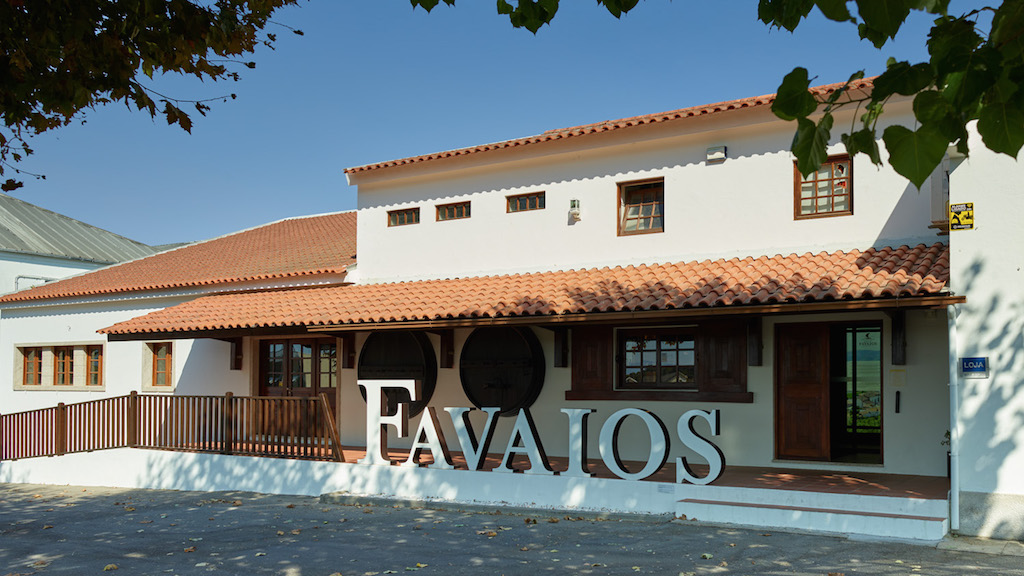
🍇 As the name implies, Moscatel wine is made exclusively with grapes of the muscat variety.
🍷 You can try Moscatel from Setúbal or Douro in Lisbon’s city centre at most mainstream restaurants and cafes.
📦 Buy Moscatel to take home at the comprehensive Garrafeira Nacional mentioned above or at Garrafeira Estado D’Alma (Rua Alexandre Herculano 45A, 1250-189 Lisbon)
📍 Take a quick trip from Lisbon to Azeitão (less than one hour using public transportation) and visit some of the most recognized Moscatel de Setúbal producers, which include Bacalhôa, Casa Ermelinda Freitas and Jose Maria da Fonseca, to name a few. If you’re headed north to Douro, check out Adega de Favaios.
Port wine

Last but not least, let’s explore the most sought-after of Portuguese fortified wines, Port wine. This wine is exclusively produced in the northern area of the Douro Valley, which is the world’s third oldest protected wine region after the Tokaj-Hegyalja region in Hungary and Chianti in Italy. During the rule of Marquis of Pombal, back in 1756, the General Company of Viticulture of the Upper Douro (also known Douro Wine Company) was founded to regulate the wine making practises of the region and thus control the quality of the products being made here.
The popularization of Port wine started happening abroad after British merchants began exporting this wine by the barrel, as early as in the 1700s. The British involvement in Port wine trade has been so significant over the years that a quick look into Port wine brands will reveal lots of English names vs Portuguese ones.
The specific climate around the Douro River in the north of Portugal is favorable for growing the grapes used for Port wine making. The most widely cultivated varieties for Port are Tinta Barroca, Tinto Cão, Tinta Roriz, Touriga Franca and Touriga Nacional.
These days, Port wine can be white, red or rosé. While red Ports aren’t the only type of Port wine available, they are indeed the more traditional and most common and can be organized into two categories based on the characteristics of production, aging process and style:
- Ruby: the youngest of Port wine varieties, easily recognized by its bright red color and fruitiness on the palate. Premium rubies are aged in wood for up to six years. In the world of Ports, the classification of vintage doesn’t refer to the age of the wine. Within Ruby Ports you will come across wines labeled as Vintage and LBV. Vintage Port is made entirely from the grapes of a declared vintage year, highlighted as such for its exceptional qualities. Naturally, not every year is declared vintage in the Douro region and thus Vintage Ports come at a steep price. Late-bottled vintage Port (LBV) is a wine from a single year, always bottled four to six years after harvest.
- Tawny: after aging in oak barrels for two to three years, Port Tawny is transferred to French oak barrels. Consequently, and because it has greater contact with wood, it ages faster, and its flavor ends up being more nutty and complex. Great Tawny Ports can be aged for up to 40 years.
When it comes to white Ports, the categorization is made differently. In this case, is based on the levels of sweetness of the wine. The styles featured are dry, semi-dry and sweet. The wine from a single year would be classified as Colheita. White Colheita Ports are rarer than Tawny Colheita (or Vintage, also known as Single Harvest Port), and thus acquire more value thanks to their exceptionality.
The world of Port wine is vast and complex and best understood with a glass in hand! While classically Port is associated with red wines, as mentioned above, there are lovely Ports in the white and rosé varieties as well. In recent years, Port wine producers in Portugal have tried to reach a younger segment of drinkers who would traditionally shy away from serious looking drinks like Port. Today, you can ask for Porto Tonic in any given cocktail bar, which is a refreshing drink we’d recommend if you’re into G&T. If you’re after enjoying a Port rosé, we’d suggest ordering it as an appetizer before your meal, just like you would sip a Martini. While they are delectable red Ports indeed, sticking only to this type of wines would be a limitation that would keep you from tasting the incredible range of fortified wines Portugal has to offer.

🍇 Over one hundred types of grapes have been given official permission for the production of Port wine, as formally declared by the Instituto dos Vinhos do Douro e do Porto, which is a part of the Ministry of Agriculture of Portugal. But when it comes down to numbers, only a handful of varietals are widely cultivated for the production of this wine. In the red categories, we can find Tinta Barroca, Tinto Cão, Tinta Roriz (also known as Aragonez in Portugal southern Alentejo and as Tempranillo in Spain), Touriga Francesa, and Touriga Nacional. While in the white Ports, grapes such as Donzelinho Branco, Esgana-Cão, Folgasão, Gouveio, Malvasia Fina, Rabigato and Viosinho make the bulk of the production. Whether red, white or rosé (also produced with red varieties of grapes and taking the vivid color from the use of the grape’s skin during the initial stages of the wine production process), all Ports available in the market are a blend of different types of grapes.
🍷 Port wine can also be tasted in the vast majority of restaurants and wine bars in Lisbon. For a brand specific experience head to Wines of Portugal’s Tasting Room (Praça do Comércio, 1100-148 Lisbon) or to Taylor’s Port – Wine Shop & Tasting Room (Rua Cais de Santarém 8, 1100-104 Lisbon)
📦 Explore the world of Port wines and make the hard choice to take one or a few bottles back home, browsing the selection at Manteigaria Silva (Rua D. Antão de Almada 1 C e D, 1100-197 Lisbon)
📍 A trip to Porto only takes about 3 hours from Lisbon by car or train. We highly encourage you to visit Portugal’s second largest city and the northern region of the country which, apart from having its own specific charms, is home to many wine producers’ cellar in the south bank of Douro river, at Vila Nova de Gaia. Picturesque vineyards that dot the shores of the Douro river can be visited to learn more about the art of Port winemaking. Visit Portugal’s website shares further details about the Porto and Douro Wine Route.
If you enjoy tasting different wines, make sure to try these four fortified wines when in Portugal. Note that, apart from the different varieties, these can also be enjoyed in mixed drinks and cocktails, so don’t stay thirsty and explore away. Cheers!
We’ll love to see your photo shoots, to know about your insights, questions, suggestions and wishes on your food & culture experiences in Lisbon and Portugal. Please share with us via Facebook, Instagram or Twitter and tag us @tasteoflisboa or #tasteoflisboa.
Feed your curiosity on Portuguese food culture:
A quick introduction to Portuguese wine (and Portugal’s wine regions)
Azores and Madeira: discover the wines from the Portuguese islands
9 Portuguese snacks and wine pairings that will surprise you
10 Portuguese cheese you must try
Real people, real food. Come with us to where the locals go.
Signup for our natively curated food & cultural experiences.
Follow us for more at Instagram, Twitter e Youtube
